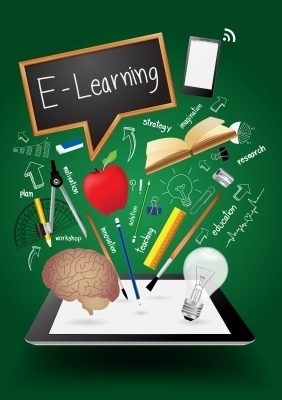A Strategy For An e-Learning School Culture
E-learning refers to learning and teaching using electronic media and requires the use of information and communication technologies combined with electronic media (Simonson, Smaldino, Albright, & Zvacek, 2000; Kok, 2013). In education, e-learning should center on the student with the teacher serving as the learning facilitator. Teaching should always be about the needs and abilities of the students and how learning will happen easily for them. Learning is an ongoing process that must be purposeful and intentional for each student so that they may reach their fullest potential. An e-learning culture is one in which the emphasis is on the teacher, the student, and the technology used to facilitate that learning experience (Simonson et al., 2000; Kok, 2013).
An E-Learning School District
When creating, cultivating, or changing a school culture it is imperative the stakeholders of the organization understand the need for change. It is also important to determine if the intended change is a first order or second order change. To determine the magnitude of change, the leaders of the school district must know its stakeholders and the current culture of teaching and learning that already exists (Waters, Marzano, & McNulty, 2003). It is true for any school that changes have a greater impact on some more than others because of who and how those changes affect them. In a school where teaching and learning happen naturally with technology this would be a first order change easily achieved with little effort because an e-learning culture, for the most part, already exists. However, in a school where technology is integrated very little, or poorly, a second order change is required. In this case the success of changing the school district’s culture rests on each individual school’s teachers, staff, student body, parents, and community members. Leaders would need to be prepared to discuss and answer the why, what, how, and when of the change and provide ongoing support for the change to happen successfully (Waters et al., 2003). This is where the implementation of a district wide e-learning culture should begin.
Communication
The number one goal in education is student achievement. Every decision made and lesson plan created is based on helping students learn and be successful. A change becomes second order when it is not obvious to school members how the change will make things better for students (Waters et al., 2003). Often a second order change like the one proposed in this paper would require teachers and staff to learn new approaches or ideas to teaching. These ideas might conflict with the existing knowledge or training staff currently poses to implement such a change.
A Shared Vision.
Teaching is not a one size fits all approach to education and many teachers and school administrators often find themselves with conflicting values and beliefs about teaching and learning. The information and training teachers receive on the front end of a district-wide initiative is significantly important in establishing a shared vision. The more time teachers have to share, discuss, and experience implementing the e-learning philosophies and teaching manipulatives the more influence and likely schools will be work together in this cultural change. The goal to a successful implementation of an e-learning school culture is a common vision, shared by all stakeholders.
Recognizing Strengths and Weaknesses.
One of the responsibilities of a good leader while implementing change is identifying the strengths and weaknesses of the current school culture, its teachers, and staff (Waters et al., 2003). Leaders should begin by identifying the technology needs of teachers and students in the district by asking for their input and help. Later leaders should identify the types of technology that currently exists in the school district along with those teachers who are experienced and comfortable with an e-learning approach to education. Once key resources for implementation have been identified, leaders should access the needs of its learners, teachers, and technology infrastructure (Waters et al., 2003). This will help the school district prioritize and develop a plan for a successful e-learning implementation.
A key strategy for successful implementation is to utilize the strengths of teachers, students, and staff to talk and share with others about their experiences using technology in education (Simonson et al., 2000; Waters et al., 2003). Monopolizing on the strengths of each school’s teachers and staff allows those members of the school culture to share and become apart of owning the vision of an e-learning school-wide approach to education. Allowing teachers to share and demonstrate an e-learning activity is one strategy to start a district wide session where the concept of e-learning is introduced. Once the experiences are shared teachers in the district should be ready to learn more about the implementation for establishing an e-learning school culture.
Providing Support
The introduction of e-learning resources and new technologies in schools is often a large contributor to the magnitude of change experienced by its stakeholders. It is not always enough to simply provide the technology and equipment required to shift a school’s pre-existing and well established learning culture (Kidd, 2012; Al-Shboul 2013). The magnitude of change for the school district and each individual school should determine the ongoing support required to facilitate a successful cultural transition (Waters, 2003; Kidd, 2012). Teacher and staff training, technology, tech integration, and internet support will need to be considered and established before implementation can begin.
Professional Development.
Teachers and staff will need to expand on the philosophies and beliefs currently held about teaching and learning. Providing staff developments, professional learning communities, and just-in-time trainings throughout the school year will help establish a common shared vision among all stakeholders. Providing learning opportunities for teachers, students, and other stakeholders to try new technologies, make mistakes, and see the benefits of e-learning for themselves is powerful (Kidd, 2012; Al-Shboul 2013).
Current trainers, academic coaches, and other support staff will also have to adjust their attitudes, knowledge base, and understanding of e-learning. It is likely their job responsibilities and roles will expand and change as the school culture shifts. The development of online training modules, web-based training resources, and becoming e-learning experts is a necessary requirement of support staff as implementation of the change is initiated (Kidd, 2012).
Technology.
On going technology support is another necessary requirement to a district’s shift to an e-learning school culture. Technology equipment, tools, resources, internet, and the district’s technology infrastructure will have to be maintained and replaced as new technology becomes available. This will take money, the right people, and time. The school district will need to establish a technology budget, which can support and maintain a district-wide e-learning initiative. Technology support staff will need to be employed to maintain technology equipment and support teachers with various technology issues.
Strategy Rationale
By focusing on communicating a shared vision, identifying the strengths and weaknesses of staff, providing professional developments, and maintaining technology the closer the school system moves towards meeting students where they are and making learning relevant and rigorous. Of course the strategies shared above also ensure that necessary instruction is received and an e-learning culture is developed and nurtured so that it is not something extra teachers do but an embedded part of how teaching and learning happens every day in the classroom. Given these well established leadership responsibilities, implementation strategies, and given that each is maintained with fidelity will serve as the foundation to which a successful e-learning school district will emerge.
Conclusion
An e-learning environment is becoming essential for schools around the world attempting to meet the learning needs of their students. A school’s culture and shared vision is vital to an organization’s successful implementation of e-learning. With the support of teachers, staff, students, parents, administrators, and the community an e-learning culture will be developed and nurtured. In this paper a strategy for creating an e-learning school environment and culture was discussed and proposed.
References
- Al-Shboul, M. (2013). The Level of E-Learning Integration at the University of Jordan: Challenges and Opportunities. International Education Studies, 6(4), 93-113. doi:10.5539/ies.v6n4p93
- Kidd, W. (2012). Utilising podocasts for learning and teaching: A review and ways forward for e-learning cultures. Management in Education: SAGE, pp. 52-57. doi: 10.177/0892020612438031
- Kok, A. (2013). How to manage the inclusion of e-learning in learning strategy. International Journal Of Advanced Corporate Learning, 6(1), pp. 20-27. doi:10.3991/ijac.v6i1.2341
- Simonson, M., Smaldino, S., Albright, M., and Zvacek, S. (2000). Teaching and learning at a distance: Foundations of distance education. (5th ed.). Upper Saddle River, NJ: Merrill.
- Waters, T., Marzano, R., & McNulty, B. (2003). Balanced leadership: What 30 years of research tells us about the effect of leadership on student achievement. MCREL, pp. 1-19. Retrieved from http://www.educationalleaders.govt.nz/content/download/499/3898/balanced-leadership.pdf









